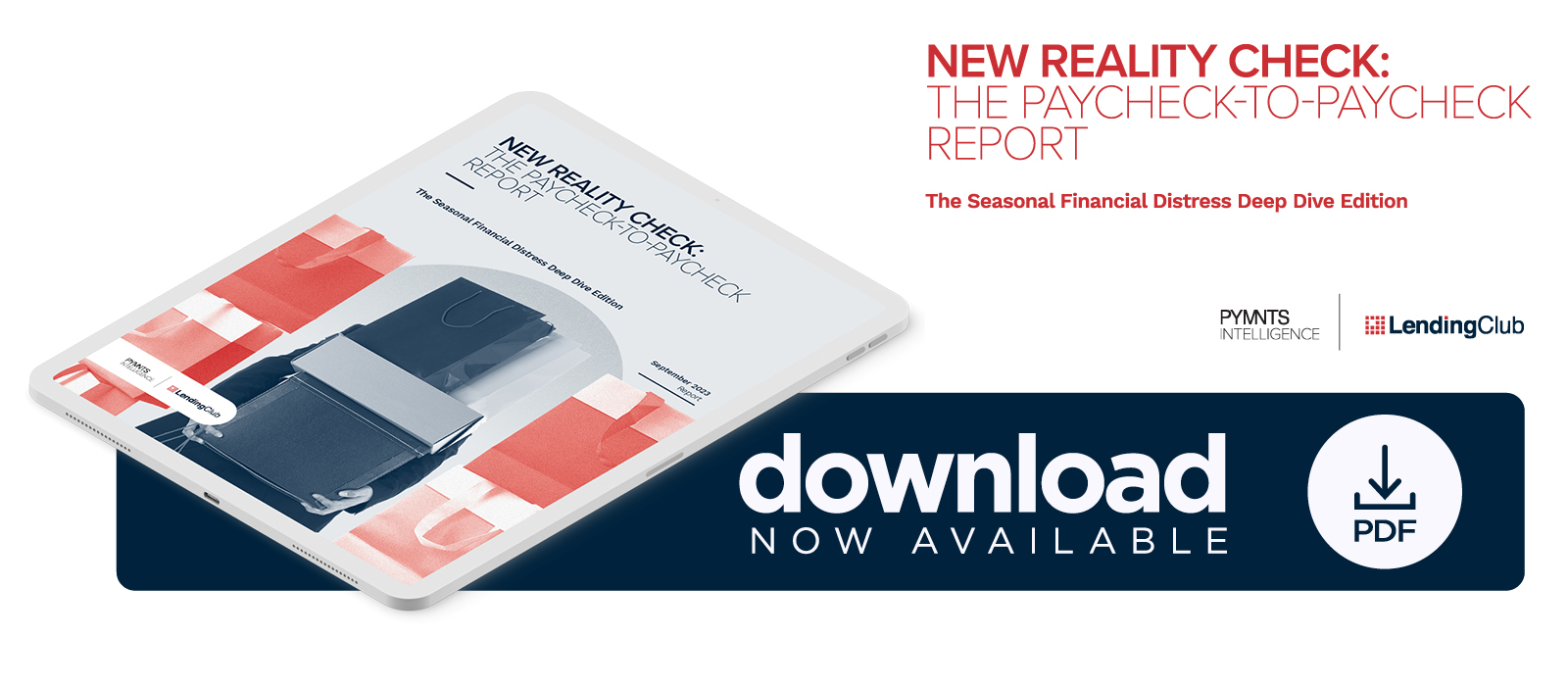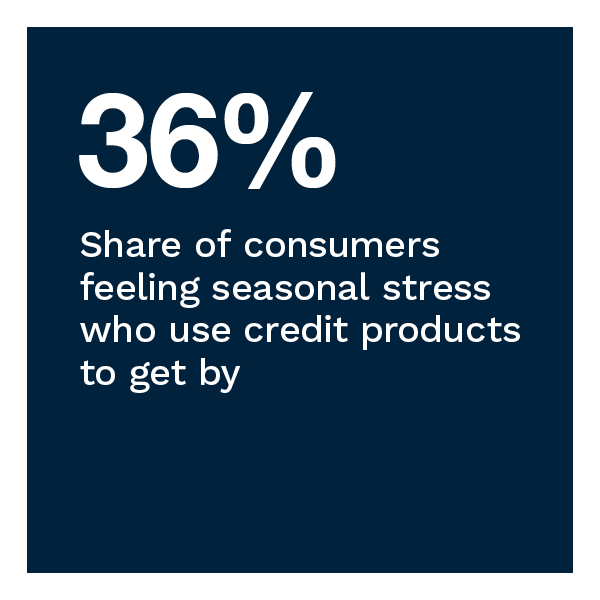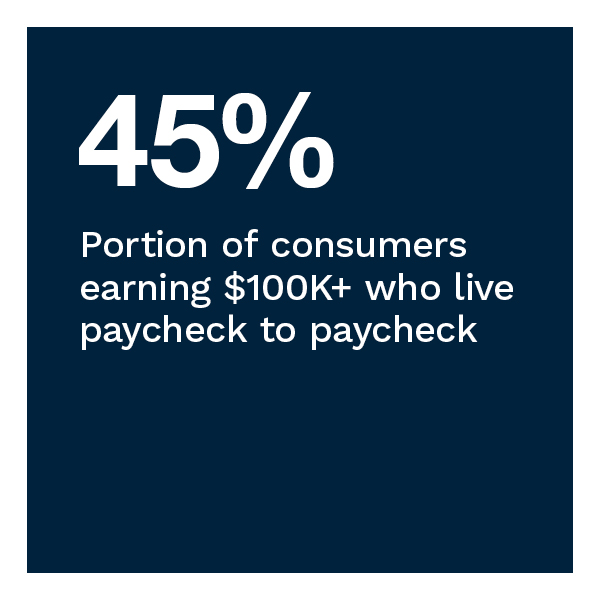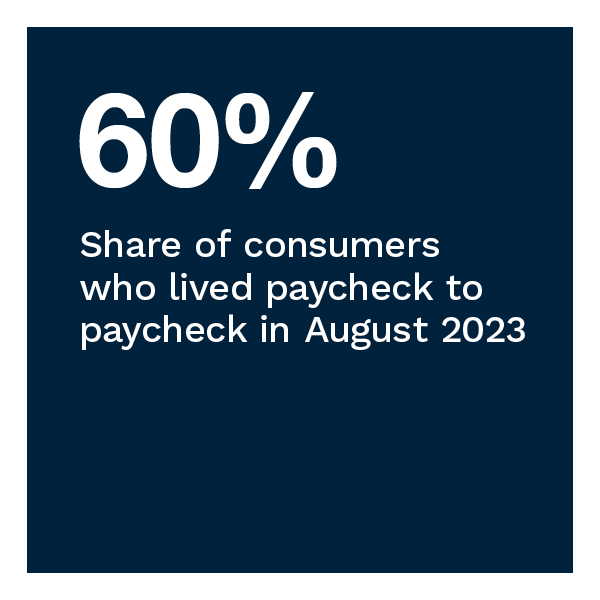Holiday Season Creates Financial Stress for Two-Thirds of US Consumers
 Living paycheck to paycheck continues to be the predominant financial lifestyle in the United States, even as inflation has slowed. As of August 2023, 60% of consumers live paycheck to paycheck, with 19% struggling to pay monthly bills. Those living paycheck to paycheck include as many as 45% of high-income consumers.
Living paycheck to paycheck continues to be the predominant financial lifestyle in the United States, even as inflation has slowed. As of August 2023, 60% of consumers live paycheck to paycheck, with 19% struggling to pay monthly bills. Those living paycheck to paycheck include as many as 45% of high-income consumers.
Despite efforts to budget and save, many consumers across financial lifestyles report that their financial standing fluctuates with the seasons. Forty-nine percent of consumers consider their financial situation particularly tight at specific times of the year. Of those consumers, 28% do not live paycheck to paycheck.
These are just some of the findings detailed in this edition of “New Reality Check: The Paycheck-to-Paycheck Report,” a PYMNTS Intelligence and LendingClub collaboration. The Seasonal Financial Distress Deep Dive Edition examines how seasonal spending impacts consumers’ ability to manage expenses and accumulate savings. This edition draws on insights from a survey of 4,218 U.S. consumers conducted from Aug. 2 to Aug. 15 and an analysis of other economic data.
Other key findings from the report include:
The factors that introduce seasonal financial distress vary significantly throughout the year, with events and celebrations the most cited factor.
Consumers cite December and November the most as times of financial stress. Fifty-five percent of consumers facing seasonal swings cite events and celebrations as reasons for financial distress. Thirty-two percent of consumers cited utility bill cost changes as a reason, with 13% saying it is the top reason. Thirteen percent of respondents cite tax payments as the top reason for this distress, with another 15% saying it is a factor.
When grouping distressing factors by quarter, no factor was the top-cited more than once.
Changes in utility bills topped the reasons consumers experienced financial stress for Q1, at 18%. Tax payments led in Q2, with 40% of consumers reporting this as a reason for seasonal financial distress. School expenses topped the list for Q3, with 18% citing that this factor contributed to their financial stress. Events and celebrations topped the list in Q4, with 47% citing this as the top reason for financial stress.
Using credit products to smooth out seasonal dips in financial standing is a top strategy across all financial lifestyles.
Nearly half of consumers say they cut back on nonessential spending as a strategy to deal with seasonal financial distress. The most frequently cited coping strategy across all financial lifestyles is using credit. Overall, 36% of consumers feeling seasonal financial stress use credit products, but 21% say this is their top strategy. This share is virtually the same as respondents who cite cutting down on nonessential spending as their top strategy.
Struggling consumers continue to find ways of managing their budgets to make ends meet in today’s financial environment. Still, they face various financial stressors depending on the time of year. Download the report to learn more about how U.S. consumers living paycheck to paycheck deal with seasonal financial distress.
